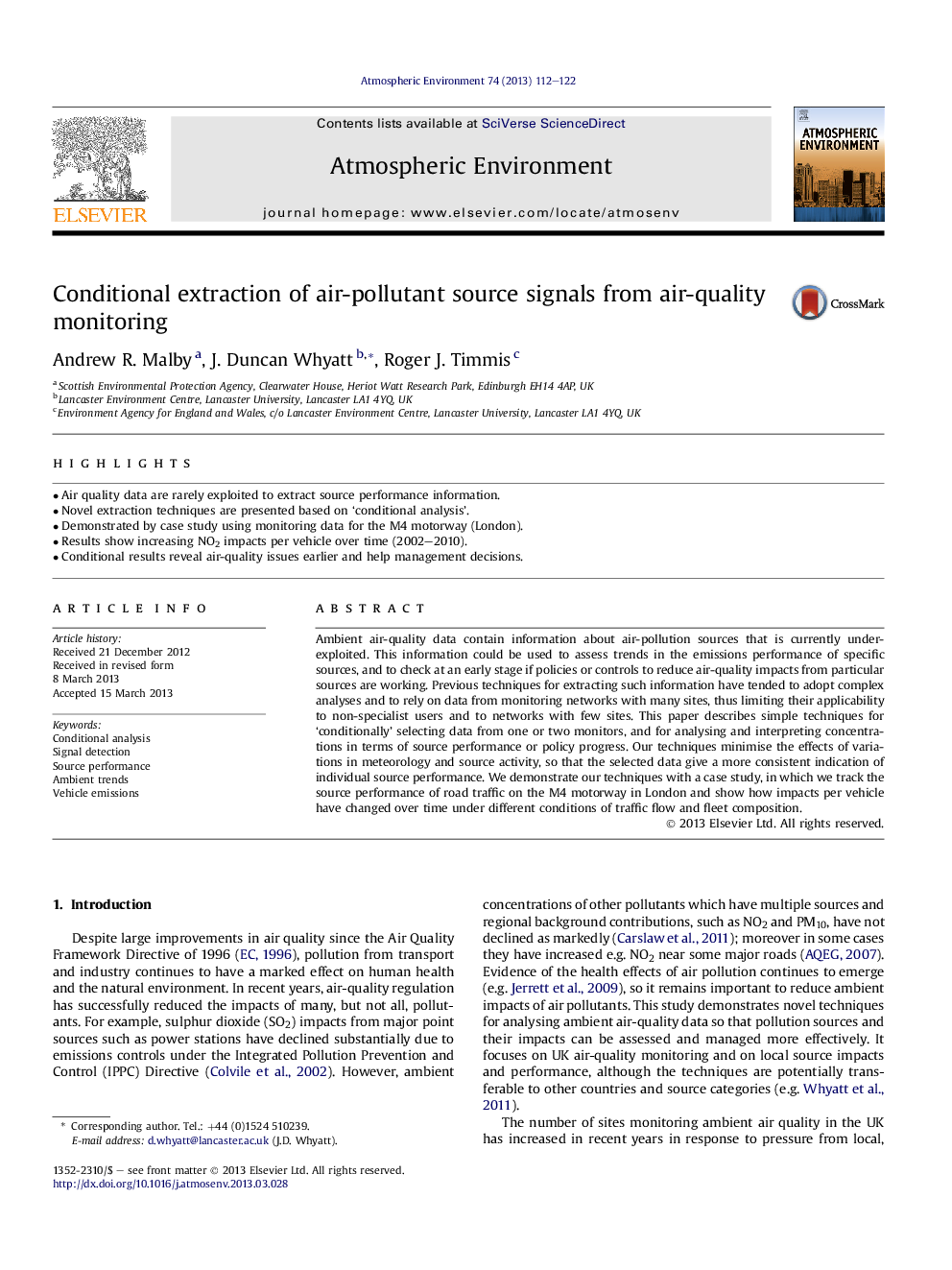| Article ID | Journal | Published Year | Pages | File Type |
|---|---|---|---|---|
| 4438179 | Atmospheric Environment | 2013 | 11 Pages |
•Air quality data are rarely exploited to extract source performance information.•Novel extraction techniques are presented based on ‘conditional analysis’.•Demonstrated by case study using monitoring data for the M4 motorway (London).•Results show increasing NO2 impacts per vehicle over time (2002–2010).•Conditional results reveal air-quality issues earlier and help management decisions.
Ambient air-quality data contain information about air-pollution sources that is currently under-exploited. This information could be used to assess trends in the emissions performance of specific sources, and to check at an early stage if policies or controls to reduce air-quality impacts from particular sources are working. Previous techniques for extracting such information have tended to adopt complex analyses and to rely on data from monitoring networks with many sites, thus limiting their applicability to non-specialist users and to networks with few sites. This paper describes simple techniques for ‘conditionally’ selecting data from one or two monitors, and for analysing and interpreting concentrations in terms of source performance or policy progress. Our techniques minimise the effects of variations in meteorology and source activity, so that the selected data give a more consistent indication of individual source performance. We demonstrate our techniques with a case study, in which we track the source performance of road traffic on the M4 motorway in London and show how impacts per vehicle have changed over time under different conditions of traffic flow and fleet composition.
